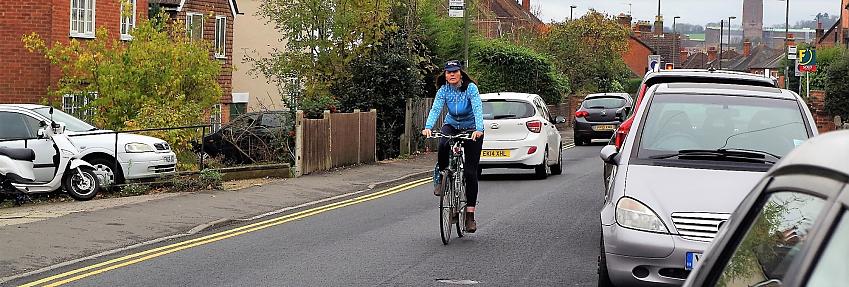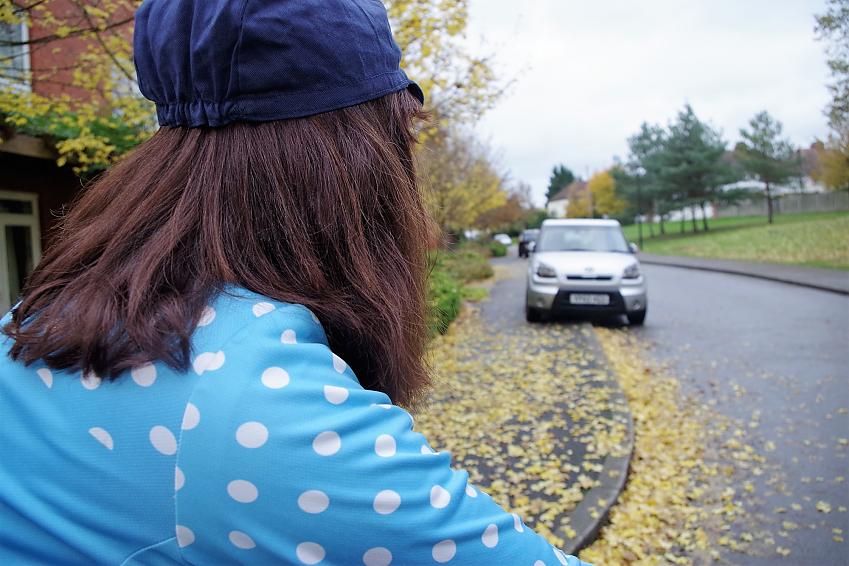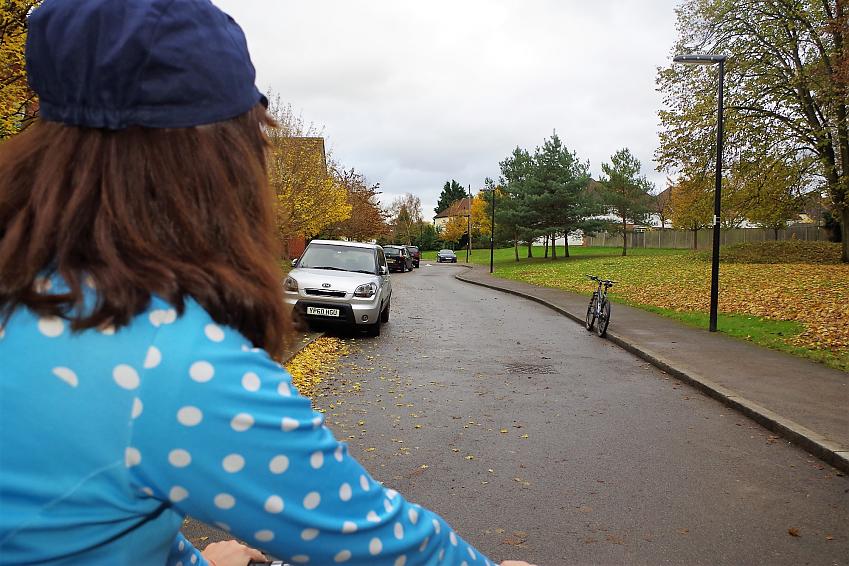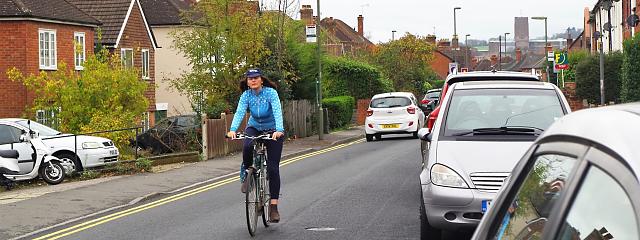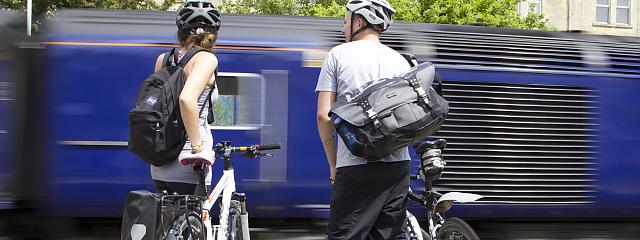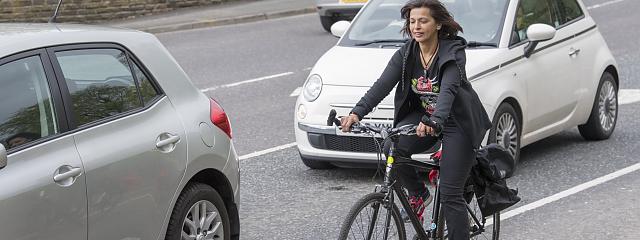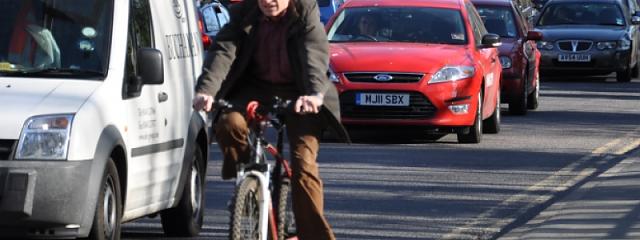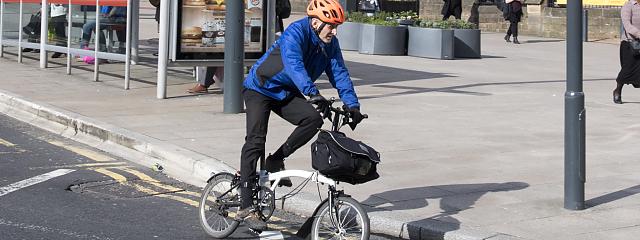
How to help drivers see you while cycling at roundabouts, traffic lights, right turns and bends
How to help drivers see you while cycling at roundabouts, traffic lights, right turns and bends
In my previous article, I discussed how you can make yourself more visible to drivers by taking a more prominent road position. Now let’s look at the specific situations of negotiating roundabouts, traffic lights and right turns, as well as riding round a bend.
Roundabouts
We’ll look at riding round a roundabout first. The Highway Code Rule 77 for cyclists negotiating roundabouts rather unhelpfully says that:
“You may feel safer walking your cycle round on the pavement or verge. If you decide to ride round keeping to the left-hand lane you should:
- Be aware that drivers may not easily see you
- Take extra care when cycling across exits. You may need to signal right to show you are not leaving the roundabout
- Watch out for vehicles crossing your path to leave or join the roundabout.”
By following these recommendations (dismounting or keeping to the left-hand lane), your journey will be slower and you may not find it easy to rejoin the flow of traffic, of which you are a legitimate part. Fortunately, the National Standard in cycle training has rather different advice.
As you approach the roundabout, check behind carefully – from as far back as possible – before moving into the centre of the lane, signalling your intentions clearly if necessary with an outstretched arm and flat palm. This will prevent other traffic overtaking and mean you are more visible.
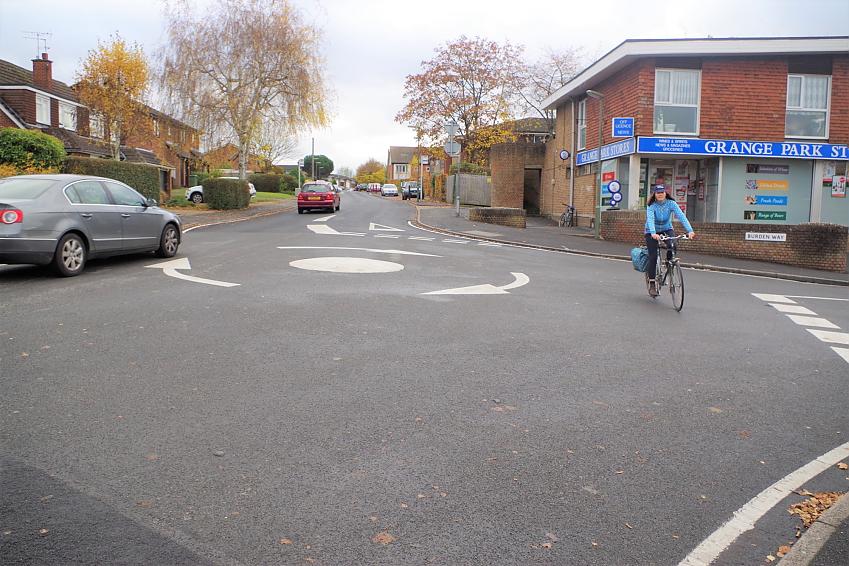
Your aim is to cycle round the roundabout in the most dominant position possible, rather than keeping into the left-hand side, which will put you right next to vehicles emerging from the left. It also leaves you vulnerable to motorists turning off the roundabout straight across your path.
Keep checking each exit as you ride past it, making eye contact with the drivers waiting to enter the roundabout and behind over your right shoulder if possible. Before your own exit, check behind to the left to make sure you are not being undertaken, then turn left, only signalling if it’s safe to do so: drivers should be able to tell by your road positioning which way you are going.
Traffic lights
The same principles apply to traffic lights – ask yourself where is the best place to ride so that you can see and be seen. If there is queuing stationary traffic as you approach the junction, either overtake carefully on the outside and then take up a central position at the front of the queue or wait patiently behind, again in the centre, rather than to the left-hand side of the lane.
As you cross the junction, remain as central as possible, depending on the amount and speed of the other traffic.
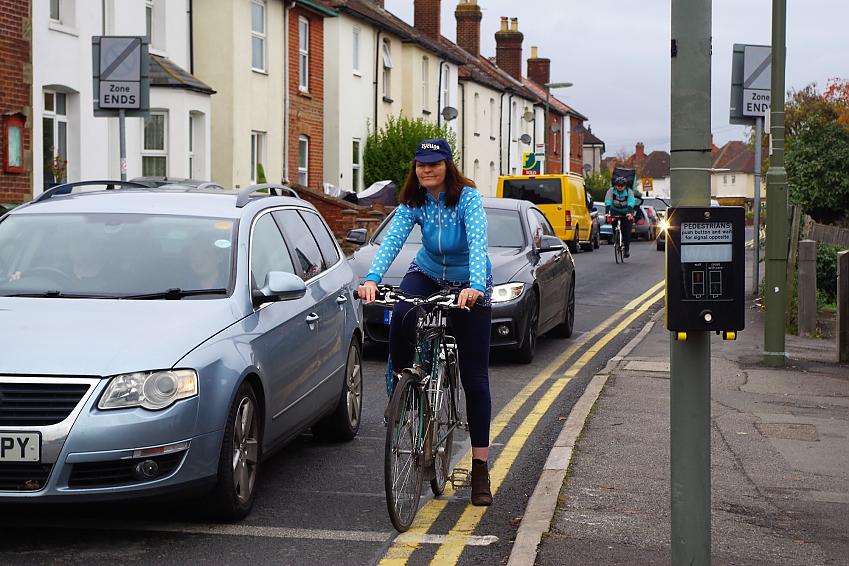
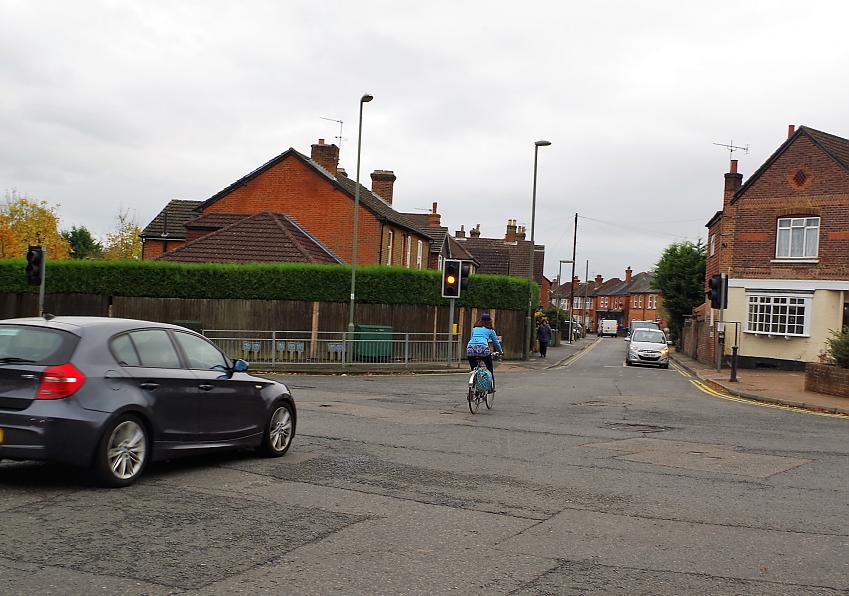
Turning right
When turning right, you can use the same technique to move yourself into a position of greater visibility: plan well ahead, check behind at least twice, move into the centre of the lane, indicating right if safe to do so, then wait for oncoming traffic to pass if necessary.
If the road is narrow and busy, I tend to wait a little to the left-hand side of the centre white line so that traffic behind has to wait to pass me on my left. I always check behind again as I turn, just in case somebody has decided to overtake the traffic behind.
General road positioning
Many cyclists stick like glue to the kerb, too afraid to move away from the gutter. But this is just where you’ll be most likely to encounter hazards such as drain covers, potholes, slippery paint, broken glass and more.
By staying a bit further out, you'll be more visible and more likely to avoid them. How far out will depend on traffic speed and conditions, the size of road, your cycling confidence and speed so it’s hard to be prescriptive.
I prefer to keep well in where the road is fast, busy, and narrow, or when I'm riding more slowly because of wind or gradient. But I move into the centre of the lane or further out when it’s relatively quiet or there are parked vehicles on my side or a road narrowing ahead.
Avoid snaking back in and out of parked vehicles – either stop to let vehicles come through if there’s a space or stay out until you feel it’s safe to move back in again.
Negotiating a bend
Take a look at the pictures below. Which one has the better view of the road ahead?
Cycling in the centre of the lane rounding a bend, whether in town or country, can prevent people trying to overtake where there is not enough room and give you better visibility of the road ahead so drivers coming the other way are more aware of you, too. It can also move you away from the mouths of junctions.
By riding in this way, you will feel more in control of your environment. The trick is to be flexible and not rigidly stick to one or other part of the road. Constantly reassess where the most visible place to ride is, taking into account the prevailing traffic conditions and type of road you’re on.
Further training
Finally, remember that cycling is a statistically safe activity but undertaking some cycle training will make it even more so. Find a National Standard instructor to help you become a more confident rider to cope with the many different situations you will encounter on today’s busy roads.






